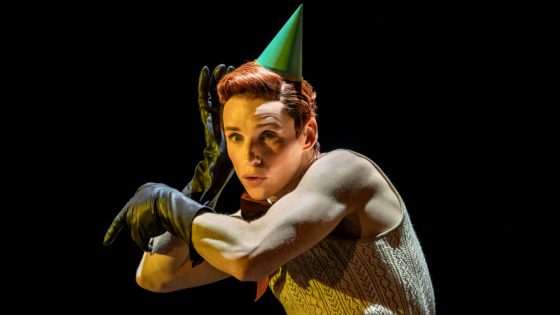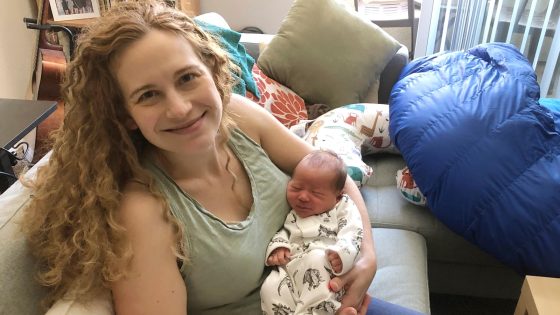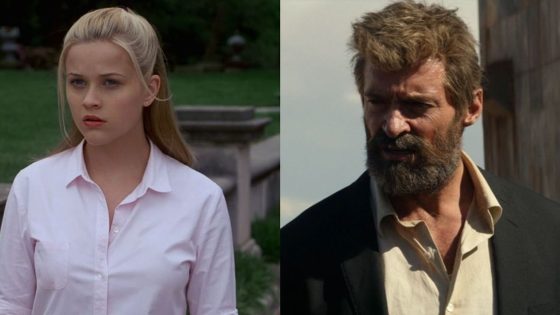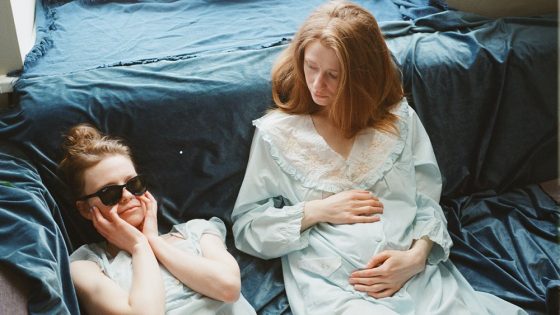“No extraneous commotion,” Jordan Fein, the associate director of “Cabaret at the Kit Kat Club,” beseeches the small army of construction crew members who are drilling, hammering and carrying planks of wood around him, not to mention the half-dozen musicians and dancers waiting to rehearse.
It’s roughly two weeks before the revival of John Kander and Fred Ebb’s “Cabaret” opens its doors to the public, and Fein is fine-tuning the prologue, an hour-and-15-minute immersion into club culture that precedes the show. It’s a daring piece of theatrical provocation that has helped to make the Broadway production one of the season’s hottest (and most expensive) tickets. It’s also unusual. For this version of “Cabaret,” playgoers are encouraged to arrive long before the opening number to visit the Kit Kat Club. There, they can have a drink and walk through a series of spaces, where they will observe performers dancing and playing music that is sensual, captivating and intended to loosen everyone up.
“We needed something to serve as a bridge between the outside world and the performance of ‘Cabaret,’ so we came up with this idea of a prologue,” says Rebecca Frecknall, the show’s director. “We needed to do something to make this space feel alive from the moment that the audience crossed the threshold into it.”
During rehearsals on that March afternoon, a member of the prologue ensemble, Will Ervin Jr., is bare-chested but for a ruffled collar transported from the Elizabethan era by way of Studio 54. After adjusting his kneepads, he drops to a headstand. Offstage, a violinist accompanies Ervin as he kicks his legs into the air, as though riding an imaginary bicycle.
“Musically, we’re going a little long,” Julia Cheng, the show’s choreographer, tells the performers after they take a break. Truthfully, it’s hard to know how she can tell, because everything is being drowned out by the percussive thrum of a power drill. But such is the mad scramble to get this ambitious revival off the ground following its sizzling sold-out run on the West End, where it earned seven Olivier Awards. It’s a scheduling gantlet that’s seen Cheng and Fein moving simultaneously between rehearsals for the show itself and the prologue, which have separate companies of performers.
“It was mad — it was utterly mad,” Cheng says a few weeks later via Zoom. “When I got this assignment, I knew I’d have to prep like never before because I needed to be in multiple places at once.”
Deja McNair (Prologue Dancer) in the Vault Bar
Marc Brenner
Audience members enter “Cabaret at the Kit Kat Club” through an alleyway, walking past trash cans overflowing with garbage and debris (“That’s not a prop,” Tom Scutt, the show’s designer, notes). There’s a reason ticket buyers are accessing everything through a side door of the August Wilson Theatre, where the show took up semi-permanent residence in April. The production wanted to make it clear that this isn’t a standard night of Broadway razzle-dazzle. “I want to challenge the idea of what is an entrance,” Scutt says. “I wanted there to be like this descent into the cabaret. At the same time, I want people to think hard about how this work is performed and the arenas in which this kind of art is showcased.”
And here’s what awaits theatergoers as they enter the Kit Kat Club to see a prologue that unfolds across three distinct spaces. There’s the “Vault Bar” (formerly the theater’s Tuscan-style lobby). After some renovating and rebuilding, it’s now dominated by an elevated stage, as well as a rotating eye with a disco ball for an iris — that’s where I observed Ervin fine-tuning his headstand. Repeated throughout the room are the words “gaiety,” “pity” and “truth” — which also are featured in a plaque on the wall that Scutt decided to use as a motif. It’s the largest gathering spot, and one that feels otherworldly. “I wanted it to be this kaleidoscopic, prismatic kind of Alice-down-the-rabbit-hole thing,” he says.
Then there’s the “Red Bar,” which is located roughly a floor above. It’s bathed in reddish lighting — hence the name. Here, performers dance behind beaded curtains while bartenders serve drinks out of a wooden structure that resembles a confessional. There’s also a triptych of paintings by artist Jonathan Lyndon Chase that celebrates Black queerness. Scutt wanted the space to have a voyeuristic quality. “It’s a bit woozier,” he says. “It’s a bit sexier. I was interested in creating something that was a little like a Kubrick version of the Kit Kat Club.”
Lastly, there’s the “Green Bar,” which is less sinister, even a little silly. The walls here are adorned with images of sequined fruit. There are also Polaroids of actors who appear in the show. “I wanted it to feel like a classic New York gay bar,” Scutt says. “It’s comfortable and nostalgic and knowing and fun and camp.”

Iron Bryan (Prologue Dancer) in the Red Bar
Marc Brenner
Before seeing the show’s stars, Eddie Redmayne and Gayle Rankin, perform such Kander & Ebb classics as “Maybe This Time” and “Willkommen,” those who check out the prologue will experience original music composed by Angus MacRae. It’s eerie and modern, with a synthetic undercurrent, but it also has classical, jazz and old-world influences. MacRae rattles off Gershwin, Debussy and Ravel, along with Russian folk music and modern composers like Jon Hopkins, as being part of the hodgepodge of styles that inspired the compositions. Portions of the work are prerecorded, while other selections are played live by members of the prologue ensemble.
“I wanted the music to be in conversation with ‘Cabaret,’ not simply to mimic what the audience is about to spend three hours hearing,” says MacRae. He also tried to evoke a dreamlike state. “It needs to be surreal,” he adds. “It should feel a little bit like a trippy opium den.”
The “Cabaret” production team leaned into the concept of creating a space that was ahistorical, rather than replicating the look and feel of clubs of the Weimar era. That’s the fleeting moment of sexual permissiveness, before the Nazis assumed power, that serves as a backdrop to “Cabaret.”
“We didn’t want to transport the audience to a bygone Berlin in a kind of nostalgic, re-creational way,” says Frecknall. “We were more interested in capturing an atmosphere. We wanted to give people the idea of how it would feel to be in one of those clubs, but to do it in a modern way.”
That approach extended to the five dancers who move between the various bars throughout the prologue. Cheng, who has a background in punking and waacking, two styles of street dance often associated with club culture, wanted to bring that subversive energy to the dances she choreographed. “I want it to be almost like you’re watching a jam session,” Cheng says.
But it’s a jam session that’s perfectly calibrated and coordinated. The dancers have synchronized watches, so they know when and where they should be at any given moment. That keeps them on schedule as they move between the bars, performing site-specific routines in each.
“It feels so informal, but it’s so detailed and precise right down to the minute,” Cheng adds. “Everyone is watching their clock so they know when they should be in this space or that space. Everyone’s got their own track that they’re racing along.”

Francesca Dawis (Prologue Musician) in the Vault Bar
Marc Brenner
For Fein, who directs the prologue in addition to working on the primary stage show, the hour and change spent at the Kit Kat Club isn’t just about tossing back a few cocktails. It’s meant to be a seance of sorts. The August Wilson opened in 1925, four or five years before the events of “Cabaret.” It has hosted performances by everyone from Helen Hayes to Gregory Hines to Bill Maher, while enduring depressions, recessions, wars and periods of civic unrest.
“I want our performers to almost be like ghosts of the building,” says Fein. “They evoke the sense of history. I know it sounds a bit spiritual, but I do think that our production stands on the shoulders of the people that were acting and performing in Berlin in the 1920s and ’30s. We owe them a debt.”
Like “Cabaret” itself, the prologue celebrates the spirit of the nightclub acts that broke ground in Berlin at that time. And it memorializes the art and artists who were lost when the Nazis seized control and embarked on their genocidal quest for domination.
“It’s tragic,” Fein says. “We lost so much. We lost so many queer artists, artists of color, Jewish artists, spanning so many disciplines, that were pushing boundaries. They were so progressive that almost 100 years later we’re just getting back to exploring some of the same ideas — artistically, musically, politically — that they were really grappling with at that time.”
“I don’t think necessarily history repeats itself, but it rhymes with itself,” he adds. “That’s what we’re hoping to show here.”
Source Agencies




